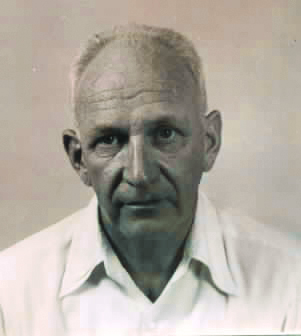From Killaloe To Iba
By Fr Donal O’Dea SSC

My vocation journey was in many ways prosaic and began during my high school years, 1940 to 1945. There was a surge of vocations to the priesthood in Ireland at that time, especially for the missions. You certainly weren’t fighting against the current – and jobs were scarce!
Religious Background
Family-wise, we had strong ties with the clergy and religious. Two of my father’s brothers were priests in our Diocese of Killaloe. A sister of my mother was a nun, working at that time in the Outer Hebrides in Scotland. Her brother had spent a year as a seminarian in the Columbans, a classmate of the late Father Aedan McGrath (Misyon cover story, Jan-Feb 1999.) We also got Far East, the Irish Columban magazine.
It seemed to me a normal thing to have the desire to be a priest. I could say that this was encouraged – certainly not discouraged – by my older brother in the National Seminary and my oldest sister who joined the Columban Sisters in 1945. Six of us went from St Flannan’s, the diocesan high school seminary, to Dalgan Park, the Columban seminary. One left and died later of tuberculosis while the rest of us were ordained in December 1951.
Apprehensions
My struggle with my vocation came in my later years in Dalgan. I had to make a major decision. I felt an urge to leave and try something else. The real urge was to be free from the challenge of the priesthood, celibacy and, more so, the public commitment to be a leader and teacher, and the life that called for. I feared all this.
The seminary at the time offered little real help in my struggle. I think I hoped that someone would tell me to leave. I was under no pressure from my family or anyone else to stay.
The Road Less Traveled
Ordination day was not the happiest of my life. In hindsight, I see it as probably the first day of my life. I made the decision to be a priest, to trust in the Lord’s call, after ordination, even if this seemed a little strange. The difficulty of making and facing decisions always remained, but you have to live with yourself.
I was sent to Zambales in 1953. My first parish was Sta. Cruz, where Zambal is spoken. My pastor was Fr John Moran, an American and a decent man. I never had much trouble with the language or food and slowly began what is now a journey of memories, both of the Columbans and of the people of this area, which I cherish and would not have missed. The struggles and low points didn’t evaporate, but I always knew that people, especially at home, were praying for me.
Happy Where I am
Right now I work with the Indigenous People’s Apostolate of the Diocese of Iba. We have a large population of Aetas, about 18,000, displaced by the eruption of Mt Pinatubo in 1991. I began this work in 1993 after having spent all my previous years in the diocese in pastoral work in various parishes. To take this job was a major decision at the time, a new beginning. But a happy one.